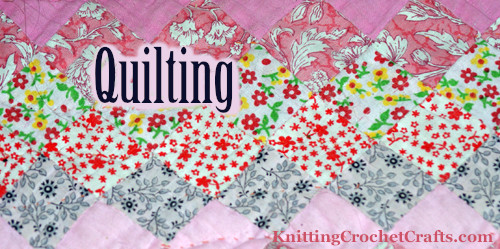
Quilting is one of the loveliest possible ways to enhance your home decor and your wardrobe.
Quilting can be a frugal, thrifty craft if your intention is to reclaim fabrics from items you no longer need. For this reason, quilting was extremely popular during the depression-era 1930s. Instead of buying new fabrics, people reclaimed fabrics from old clothing and other textiles, and re-purposed them into quilted bedding and other items. It is also possible to quilt with fabric remnants and scraps left over from other projects.
Currently, bed quilts and baby quilts are still some of the most popular quilting projects with contemporary crafters. Other popular quilting projects include quilted potholders, hot pads, mug mats, mug rugs, coats, vests, jackets, placemats, pillows, ornaments, Christmas stockings, handbags, tote bags, purses and diaper bags.
Nowadays, some people still practice frugality with their quilting, while others prefer to buy large quantities of the latest, most artistic fabrics available to use.
Either approach is valid.
If you’re interested in quilting in any form, we invite you to make use of all the quilting and sewing information we’ve made available on our website. If you have any questions, we’ll do our best to help; be sure to leave a comment in the comments area below.
Types of Quilting
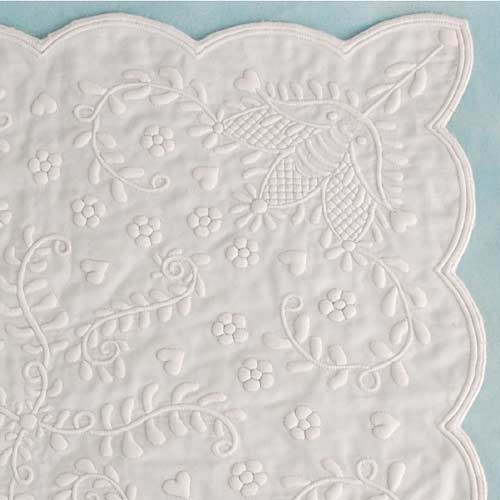
There are countless possible ways you could make a quilt, but there are several main types of quilting you might want to try:
- Pieced Quilting or Patchwork Quilting — This technique involves sewing pieces of fabric together to make a quilt top before doing the quilting.
- Wholecloth Quilting, Also Known as Boutis or Provençal Quilting — This technique involves quilting with one continuous piece of fabric as the top layer. Variations of this technique include matelassage, piqûre de Marseilles (also known as Marseilles work or piqué marseillais), and boutis. Check out the picture above for an example of what boutis quilting looks like.
- Applique Quilting — To make an appliqué quilt, the quilter stitches various shapes to a fabric background. When you want to use elaborate shapes featuring curved elements, that’s when you’d want to consider using this quilting technique. Applique is a technique you’d want to consider using if you want to design a quilt featuring flower motifs, rainbows, spirals or other similar motifs. Examples of this technique include Baltimore album quilts and some Hawaiian quilts.
There are many, many classifications of quilts beyond just these, but the vast majority of other quilt types and styles are subsets of these main types.
Quilting Patterns
There are many different ways to sew a quilt — but most quilts start with a pattern and some planning. You can either design your own quilt pattern, or you can work with an existing quilt pattern.
If you have unique ideas for how you want your finished quilt to look, it’s possible to sew your own quilt from start to finish by creating your own designs. However, many quilters prefer to use an existing pattern, because it tends to be easier to have a starting point to work from. A quilting pattern will give you just that — a starting point to use. You can stick with your pattern precisely, or you can make small changes to it such as changing out the fabric colors and prints you’ll use. A pattern typically makes the quilt-making process much easier, because a lot of the hard work, including the math, has been done for you already.
Quilting Books and Magazines
Quilting books and magazines are some of the best sources available for quilting project ideas. It’s also possible to buy standalone quilt patterns you can use for this purpose. In some cases, it is also possible to find quilting patterns in women’s magazines that are not specifically dedicated to quilting. One of my favorites is the vintage needlecraft magazines from last century that sometimes included vintage quilting patterns in addition to other types of needlework patterns and projects.
We’ve posted reviews on our website of the following publications that include quilting projects and quilting patterns:
A Book Review of Farmhouse Style Quilting
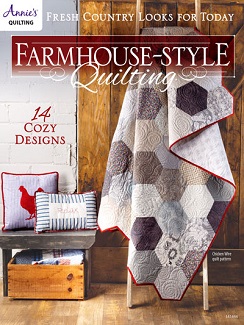
Modern farmhouse style has been one of the hottest decorating trends lately, and it is still going strong in 2022. If this aesthetic appeals to you, and you’re interested in DIY projects that reflect the style, Farmhouse-Style Quilting is a book you need to know about. The book includes 14 up-to-date projects that are all curated around the farmhouse style / country style decorating theme. The book includes patterns for making bed quilts, quilted pillows, a table topper, placemats, a baby quilt and other projects. Many of these are easy enough for total beginners to succeed with; and some of the patterns are for intermediate-level quilters.
Learn More About This Book:
- Click here to check out our detailed book review of Farmhouse-Style Quilting.
- Click here to shop for this book at the Leisure Arts website.
A Review of Annie’s Christmas 2020 Special Edition: Crochet, Sew and Quilt
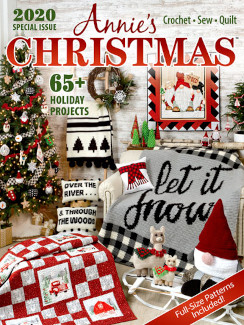
Do you enjoy quilting, sewing and crocheting? If so, you’ll definitely want to check out The Annie’s Christmas Special Edition 2020. This publication offers you the best value I’m currently aware of on a Christmas craft book. It contains 65+ lovely projects for making Christmas quilts, quilted potholders, appliqued pillows, Christmas toys, Christmas tree ornaments, Christmas wreaths and bunches of other festive holiday-themed projects. If you celebrate Christmas, and you enjoy crafting for the holidays, I think you’re going to love these projects.
Learn More:
- Click here to check out our detailed book review of this title.
- Click here to shop for this book at the Annie’s Catalog website.
Quilting Idea: Cross Block Quilted Pillow Design
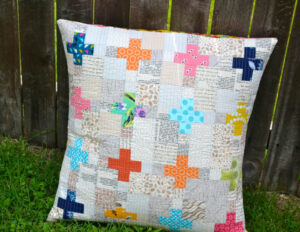
If you’d like to learn how to sew a quilt block featuring a prominent cross design, and then use your cross blocks for stitching a sophisticated pillow, you’ll definitely want to check out this free tutorial by Lori Hartman Designs.
How to Upcycle Clothes to Use in Your Quilts, Sewing Projects and Other Craft Projects
Thrift stores can be a fantastic source of affordable fabrics for your quilting projects. Let’s discuss some ideas for how to best approach the task of reclaiming and re-purposing fabrics to use them for quilting.
Quilting Supplies
To sew a quilt, you’ll typically need some supplies. There’s quite a bit of flexibility in the supplies you can use for quilting, but the following are the supplies you’ll typically need to get started:
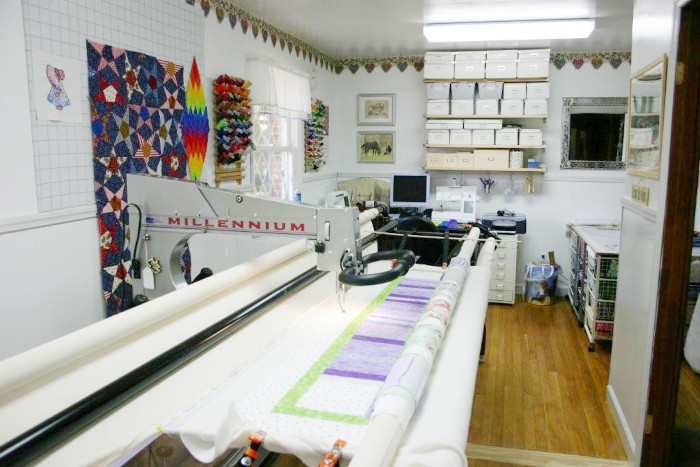
- A Sewing Machine and / or Longarm Quilting Machine A sewing machine is optional; it is possible to sew every stitch of your quilt by hand using hand sewing needles and thread. This is called “hand quilting”. However, a sewing machine makes the quilting process much quicker and easier.
For casual quilters, pretty much any sewing machine could be sufficient for doing the patchwork portions of your quilt top; it just needs to be able to sew sturdy straight seams using ordinary sewing thread. But, for doing the actual quilting, a longarm quilting system is beneficial. This is something to consider if you’re serious about spending a lot of your time quilting, or if you want to start your own commercial quilting business. In that case, you might also want to research fancier sewing machines in addition to quilting machines and quilting systems. You might decide it would be worth it to make an investment in multiple machines that can perform various tasks for you. There are sewing machines that can automate the process of doing beautiful embroidery work that can embellish your quilts. There are also specialized longarm quilting systems that make the process of quilting much faster and more precise. - Hand Sewing Needles: If you don’t use a sewing machine, you’ll need hand sewing needles to use for stitching your quilt. Even if you do use a sewing machine, you’re likely to find many uses for hand sewing needles as you work on your quilt — so it’s prudent to keep a good supply of them on hand.
- Sewing Thread — A quilter needs high quality thread in a variety of colors that coordinate with your quilting fabrics. There are overwhelming numbers of choices for threads you could buy, so if you aren’t already knowledgeable about thread, you’re invited to check out our article on sewing thread for detailed information on how to go about the process of selecting thread for your quilting projects. Learn about your various options for sewing and quilting threads. Why would you choose one thread over another? Which threads are the best for hand quilting, machine quilting, or piecing? When would you want to choose a cotton thread, and when would you be better off with a polyester thread? Find the answers to these questions and more in this article.
- Quilting Fabric — There are many different fibers and constructions that are used for making fabrics, but many of them are completely unsuitable for use in quilting projects. Ideally, you’ll want to quilt with a high-quality cotton fabric, although it is also possible to quilt with silk, silk blends or some other natural fiber fabrics.
Cotton is the most popular quilt fabric. If you are going to quilt with cotton, I recommend using organic cotton, because conventionally farmed cotton is one of the grossest polluters on the planet; According to the Pesticide Action Network (PAN), Overall, cotton farmers plant only 2.4% of the world’s cultivated land, but they’re spraying 6% of the world’s pesticides and 16% of its insecticides. Even worse, on a DAILY BASIS, close to 500 people die from acute pesticide poisoning — and countless other cotton farmers suffer from cancers, leukaemia, neurological diseases, infertility, and other problems as a result of their pesticide handling. I can’t in good conscience support that or contribute to that problem; I couldn’t live with myself thinking about the possibility that farmers somewhere might be dying just so I can have a slightly lower price on my quilt fabric. So for my own quilting projects, I either work with vintage fabrics or reclaimed fabrics, or I buy new, organic cotton fabrics that pollute less, use less water and contribute to less environmental harm overall. I urge you to give some careful thought to the matter before you choose your fabrics for your quilting projects, too. - Quilt Batting: Quilts typically have two layers of fabric separated by a layer of batting. You quilt through all 3 layers, including the batting, to get that highly textured, three-dimensional look that characterizes quilting. Batting can be made of cotton, wool, polyester or other synthetic fibers. These days, polyester quilt batting tends to be the most popular choice, but it isn’t necessarily the best choice. Vintage quilts frequently have batting made of either cotton or wool. Wool batting usually makes the warmest, and in my opinion the nicest quilt batting — and it is what I recommend working with if you can find it and afford it. Wool batting is still available, but it isn’t always easy to find locally, and it tends to be much more expensive than polyester quilt batting. But, if you are going to go to all the trouble of making a quilt, which is time consuming and labor intensive, my opinion is that you should use the best quilt batting you can afford. If you’re making a quilt to keep warm with in an extremely cold environment, you’ll definitely want to consider seeking out wool for your quilt batting.
- Beads, Embellishments, and Surface Design Supplies: You do not need to spend time beading, painting, dyeing or embellishing your fabrics — but you might want to do so. In that case, there are endless numbers of surface design supplies you might want to consider working with. There are many appliques, fabric paints, fabric dyes, appliques, batik waxes, screen printing inks and other supplies that can greatly enhance your quilt fabrics to make them unique. You might wish to stitch beads, buttons, sequins, appliques, tassels, trims or other pretty baubles onto your quilts. If you’re interested in making quilting your art form and means of self expression, I recommend learning more about techniques such as embroidery, textile dyeing, fabric painting, batik, screen printing and block printing. However, this is not necessary; if you’re just trying to make a quilt to keep warm with, and you want the easiest and most straightforward way to do so, don’t even give it a second thought if you decide to skip learning about these techniques. They are fun to learn but not essential.
- Craft Organizers — When you’re new to quilting, organizers aren’t typically a necessary item. However, the longer you stick with this art form, the more of a “stash” you tend to accumulate. When you own zillions of different quilting threads, fabrics, notions, sewing machine attachments and appliques, it can get to be a challenge to find what you need, when you need it. Craft organizers can help you to cut down on the chaos and keep your stash manageable.
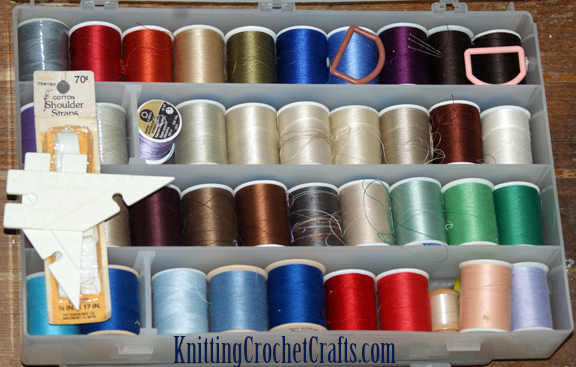
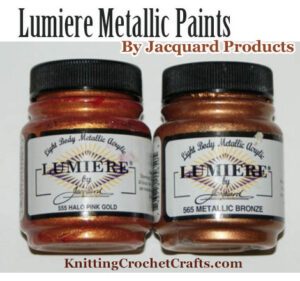
How to Organize Sewing Thread Using the Artbin Thread Storage Tray
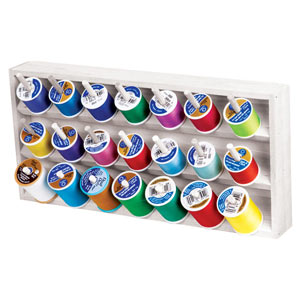
If your thread collection has gotten out of hand, and you can’t find any of the threads you need when you need them, it’s time to get yourself a new thread organizer. I invite you to check out this review of the Artbin Thread Storage Tray.
So there you have it: Those are the most important basics you need to know about quilting. I hope you found this information helpful.
Over to You: Your Questions and Insights About Quilting:
Do you have questions, insights or additional information on the topic of quilting? If so, you’re invited to share them. We invite you to make good use of the comments area below.
Thanks so much for visiting! We really appreciate your presence here. Happy quilting!
References
- At the Pesticide Action Network Website: Pesticide concerns in cotton
- At Flickr: Lori Hartman Designs
- At the Creative Commons website: Creative Commons License 2.0
- At Wikipedia: Provençal quilts
- At Wikimedia Commons: Boutis quilt image
- At Wikimedia Commons: Longarm Quilting Machine with Quilt on frame
Posted By: Amy Solovay
This page was last updated on 3-19-2022.